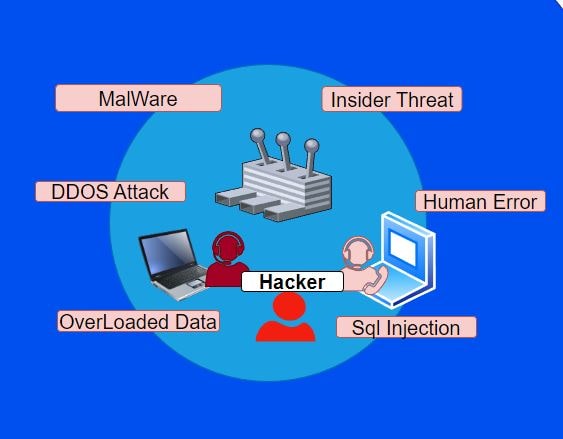Table of Contents
What is Oracle database security and importance?
Database security refers to the measures that are taken to protect a database from unauthorized access, misuse, and corruption. It includes a variety of controls, such as authentication, access control, and auditing, that are designed to ensure the confidentiality, integrity, and availability of the database and its data.
Security is important for databases because they often contain sensitive or confidential information. If a database is not secure, it is at risk of being accessed by unauthorized individuals, who could view, modify, or delete the data within it. This could lead to data breaches, which can have serious consequences such as financial loss, loss of trust, and damage to a company’s reputation.
In addition to protecting the confidentiality of the data, database security is also important for maintaining the integrity of the data. If data is modified or deleted by an unauthorized individual, it could lead to incorrect or inconsistent information being stored in the database. This could have serious consequences, such as incorrect decisions being made based on the faulty data.
Top 5 security breaches of databases
Here are five examples of major security breaches that have affected databases:
- Marriott data breach: In 2018, Marriott International announced that the reservation system of its subsidiary, Starwood Hotels & Resorts, had been hacked, potentially exposing the personal data of up to 500 million guests.
- Yahoo data breaches: In 2013 and 2014, Yahoo suffered two massive data breaches that exposed the personal data of all 3 billion of its users.
- Target data breach: In 2013, Target suffered a data breach that exposed the personal data of 40 million credit and debit card users, as well as the personal data of 70 million customers.
- eBay data breach: In 2014, eBay suffered a data breach that exposed the personal data of 145 million users, including their names, addresses, and encrypted passwords.
- Adobe data breach: In 2013, Adobe suffered a data breach that exposed the personal data of 38 million users, including their names, passwords, and credit card information.
These examples illustrate the risks that databases face and the importance of implementing strong security measures to protect against data breaches.
Is there any security concerns when adopting a hybrid environment?
There are several security concerns to consider when adopting a hybrid environment:
- Data security: Ensuring that data is secure when it is transmitted between the on-premises and cloud-based environments is crucial. This includes encrypting data in transit and at rest, as well as implementing secure authentication protocols.
- Network security: Ensuring that the network infrastructure connecting the on-premises and cloud-based environments is secure is also important. This includes implementing firewalls, intrusion detection and prevention systems, and other security controls.
- Compliance: Hybrid environments may involve the use of multiple cloud providers, each with their own security and compliance requirements. Ensuring that all of these requirements are met can be a challenge.
- Integration: Ensuring that the on-premises and cloud-based environments are properly integrated and that data can be seamlessly shared between them is important. This can be a challenge, as the two environments may have different security protocols and infrastructure.
- Visibility: Ensuring that you have visibility into the security of both the on-premises and cloud-based environments can be difficult, as you may not have complete control over all of the infrastructure.
Overall, it is important to carefully plan and implement security measures in a hybrid environment to ensure the protection of sensitive data and systems.
What are the Oracle security methods? How to secure Oracle database?
Oracle Database provides a number of security features to help secure data and the database itself.
In other words oracle is providing MSA (Maximum Security Architecture (Click Here))
These include:
- Encryption: Oracle provides various encryption options, including data encryption, network encryption, and encryption of backups.
- Authorization: Oracle allows administrators to grant or revoke privileges to users and roles, allowing them to access specific resources or perform certain actions.
- Authentication: Oracle allows administrators to set up different authentication methods, such as password-based authentication, Kerberos authentication, and Oracle Advanced Security Option (ASO) authentication.
- Auditing: Oracle allows administrators to track and log actions taken on the database, providing a record of who has accessed the database and what actions they have taken.
- Security policies: Oracle allows administrators to create and enforce security policies, such as requiring strong passwords and limiting the number of failed login attempts.
- Virtual Private Database (VPD): Oracle’s VPD feature allows administrators to set up fine-grained access controls to limit access to specific rows or columns of data.
Overall, Oracle provides a range of security features to help protect data and the database from unauthorized access or manipulation.
What are the Major Security Threats?

Major Security Threats
MalWare : Malware is short for “malicious software.” It is any software that is designed to harm or exploit a computer system, network, or device. There are many different types of malware, including viruses, worms, Trojans, ransomware, and adware. Malware can be installed on a device in a number of ways, including through email attachments, websites, and software downloads.
Insider Threat : An insider threat is a security risk that comes from within an organization. It can be an employee, contractor, or other individual with authorized access to the organization’s systems and data who intentionally or unintentionally causes harm to the organization. Insider threats can come in many forms, including theft of sensitive information, sabotage of systems, and violations of security policies. It is important for organizations to have measures in place to detect and prevent insider threats, such as employee training programs, access controls, and monitoring of employee activity.
SQL Injection : SQL injection is a type of cyber attack in which an attacker inserts malicious code into a database through a website input field, such as a login form or a search box. The goal of the attack is to gain unauthorized access to the database or to modify the data stored in the database. SQL injection attacks can be very serious, as they can allow an attacker to steal sensitive information from a database, alter or delete important data, or even take control of the entire database server. To protect against SQL injection attacks, it is important to use input validation and sanitization techniques, as well as to use prepared statements with parameterized queries whenever possible.
DDOS Attack : A DDoS (Distributed Denial of Service) attack is a type of cyber attack in which a website or online service is flooded with traffic from multiple sources in an attempt to make it unavailable to users. The goal of a DDoS attack is to disrupt the normal traffic of a targeted server, service, or network by overwhelming it with traffic from multiple sources. This makes it difficult for the targeted server or service to function correctly and can result in it becoming unavailable to users. DDoS attacks can be difficult to defend against because they often involve a large number of attacking computers, which can make it difficult to distinguish legitimate traffic from attack traffic. To protect against DDoS attacks, it is important to use network security measures such as firewalls and intrusion detection systems, as well as to have sufficient bandwidth and resources to handle high levels of traffic.
Can we read data of oracle data / contents from file (.dbf), if it is not encrypted?
or
Read data at rest?
or
Demo: Read Data from Binary Database File (Oracle data file .dbf)
“Yes”. “strings” is a linux command to read data from data file (.dbf). You can see sensitive data such as phone number in data file.
[oracle@localhost ~]$ strings /opt/oracle/oradata/XE/XEPDB1/hack_test_datafile_01.dbf }|{z HACK_TEST RL,w AAAAAAAA & : N b v Qplsql_compiler_flagsINTERPRETED,NON_DEBUG Qplscope_settingsIDENTIFIERS:NONE Qplsql_ccflagsLUG Qplsql_warnings DISABLE:ALL Qnls_length_semanticsBYTE Qplsql_debug_FALSE Qplsql_code_typeUINTERPRETED Qplsql_optimize_level2 package prvt_compress wrapped a000000 abcd abcd .....
..... abcd abcd abcd 361 1ba ZX2/u+vZD4rXLycMsI/HBGH27ygwg+3xAK5qfC9AWHPVSBoJlal1T) ' ; O c w timeExja RSAINI +91-7448236444 <<<<<<<<<<<<<<<<<<<<<<<<< See Phone number present in data file. JONES +91-7448236762 <<<<<<<<<<<<<<<<<<<<<<<<< See Phone number present in data file. [oracle@localhost ~]$
Check Full Testing to read non-encrypted oracle datafile
Without a shadow of a doubt, My answer is “Yes”. Will discuss three following methods.
Inspect Network Packets for Data in Transit
or
Read Data in Transit
[root@localhost ~]# tcpdump -i lo -A port 1521
Is Oracle database providing encryption and decryption mechanism?
- Transparent Data Encryption
- Native Network Encryption (NNE)
- Oracle Database Vault
Now question comes in mind, How we will implement? Is it easy or Complex?
I am highly recommended first understand how technology, terminology and implement the change.
- Transparent Data Encryption – (Easy to implement)
- Native Network Encryption (NNE) – (Easy to implement)
- Oracle Database Vault – (Bit complex to implement and handle)
Is there any tool to check oracle database security issue?
Use DBSAT tool and see available documentation
# Metalink Note :
Download DBSAT : Oracle Database Security Assessment Tool (DBSAT) (Doc ID 2138254.1)
# Running a Collector
./dbsat collect system@xepdb1 outputlogs_XEPDB1
# Running a Reporter
./dbsat report outputlogs_XEPDB1


